Types of Barges
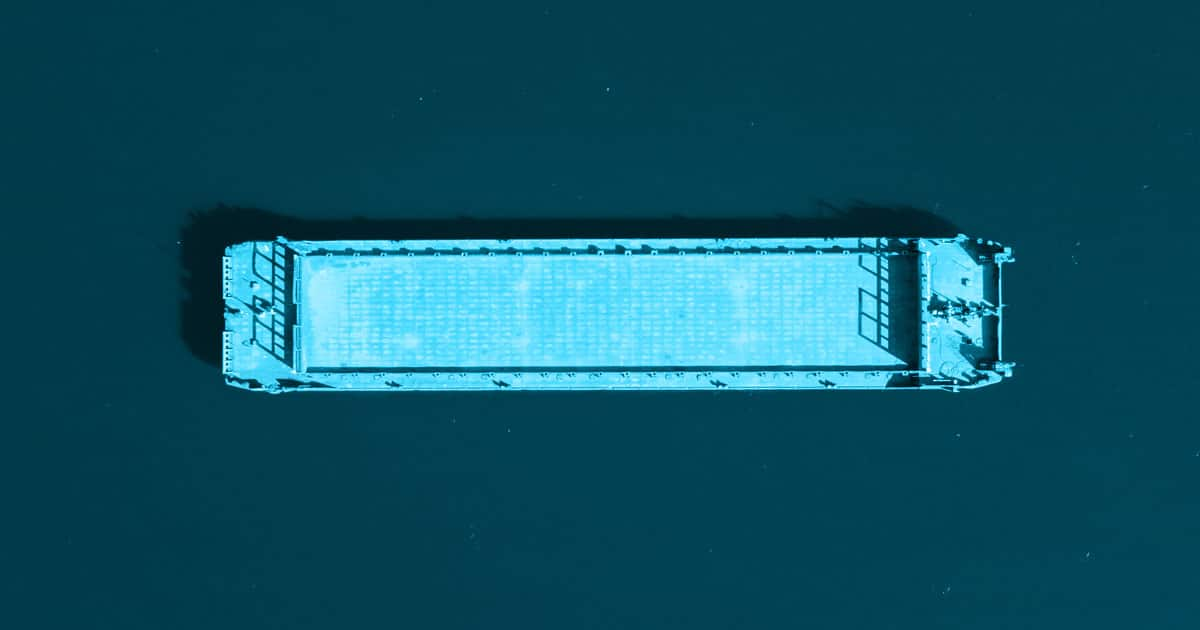
Types of barges explained
Barges might seem like crafts from a bygone age, but they’re still used widely in modern shipping. Their relative simplicity and subsequent reliability make them highly valued workhorses, used in ports and rivers worldwide.
But what type of vessel is a barge? What sizes do barges come in? And what are the different types of barges found working on the world’s rivers, ports, and oceans? You’ll find out the answers to all these questions when you read through what we’ve got to say below.
What is a Barge?
Let’s start with the basics and define what a barge is exactly. In general, it is a long, flat-bottomed boat that carries freight along rivers and sometimes in ports. Nearly all barges are unpowered, and instead rely on other vessels, such as tugboats, to drive and manoeuvre them – although you will occasionally see a self-propelled barge, if you look hard.
As with most vessels, there are many types of barges. We’ll look at specific barge types later on this page, but here we’ll take a look at their size. Barges are often designated by their overall length, and the most commonly seen length is 300 feet. These huge barges can transport up to 8,000 MT of cargo, and it’s the huge capacity that makes them so popular.
Other commonly found barge lengths are 270 feet, 230 feet, and 180 feet. Generally, the smaller a barge, the less likely you are to see one on the world’s waterways. Of course, smaller barges do have the advantage of being able to access more places than their larger counterparts.
Is a Barge different from a ship?
“Ship” is a term that can be used to describe several types of vessels, and one of these is the barge. So, all barges are indeed ships – but not all ships are barges.
A barge is characterised as being flat-bottomed and generally large, which is usually mainly for transporting goods – ships are often used to transport both goods and people. What’s more, barges are not usually powered, while most other ships are self-propelled, plus barges are much less manoeuvrable than most other ships.
Another big difference between most ships and barges is that many ships are seafaring, whereas most barges are seen on inland waterways and within ports. You’ll very rarely find a barge drifting in the open ocean.
Types of Barges
You’ll find a huge array of different barges on the world’s rivers and in the world’s seaports. We’ve collated several of the more commonly seen barges below and described them for you, so you can decide which is best for you when contacting a ship chartering company.
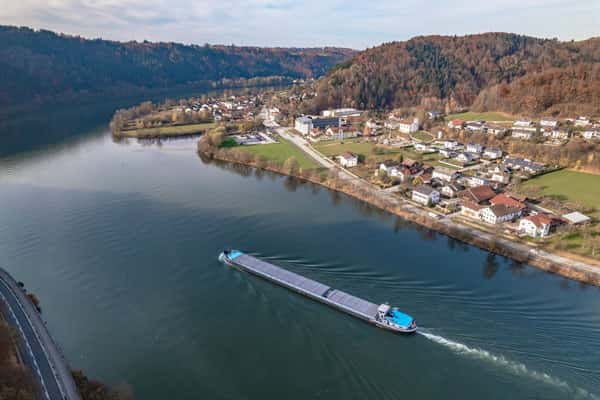
Inland Barge
Inland Barges
Inland barges, as the name suggests, are barges that are used inland on rivers and waterways. Most barges in service around the world are inland barges. They’re incredibly popular as they’re exceptionally economical, especially for over-sized and high-density cargo, allowing goods to be transported at a price companies can afford.
There are several types of inland barges – many of the other barges listed on this page can also be classified as inland barges. Barges of this type are integral components of the infrastructure of many businesses.
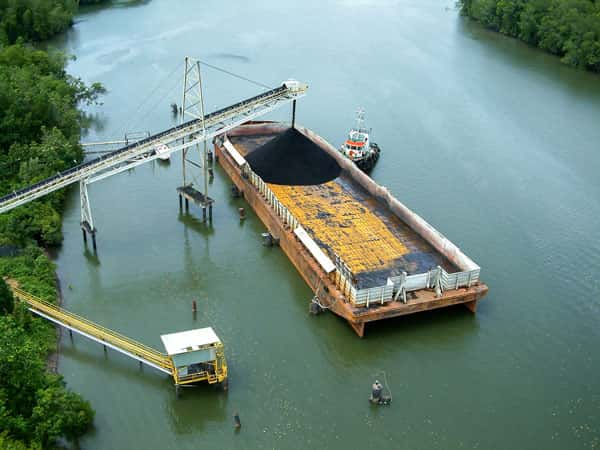
An example of a deck barge.
Deck Barges
Deck barges are barges that have been specifically designed to carry cargo on their decks. This contrasts with some other barge types, such as hopper barges and shale barges, which transport their cargo within covered spaces. Deck barges can come in a wide variety of different shapes and sizes, often specially designed to be practical for a certain purpose. Deck barges can also sometimes carry liquid cargo within their body.
Deck barges aren’t just for transporting goods, as they also make highly effective work surfaces for people and machinery engaged in work on or by waterways. Raised decks can make them even more practical. Deck barges can vary significantly in capacity and load marks – anyone looking to charter a deck barge should therefore speak to the chartering company about their requirements.
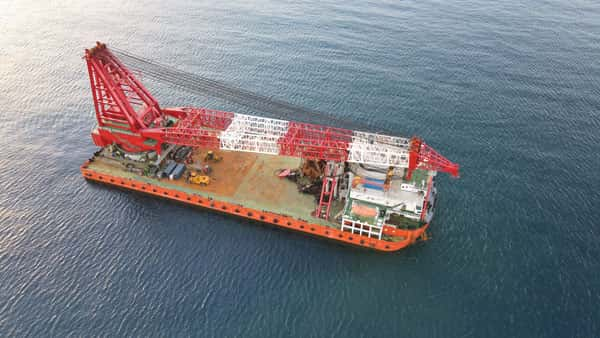
An example of a crane barge.
Crane Barges
Next on our list of types of barges are crane barges. It won’t surprise you to hear that barges of this type come complete with cranes, and they’re used widely in offshore construction. Unlike most other barges, crane barges are often self-propelled and can venture out onto the open sea without any need for ocean towage. They can also be used in shallower rivers and lakes, such as in the piling process.
You’ll find several types of crane barges, including simple cranes, Derrick barges, sheerlegs, and heavy lift crane barges. All are built to offer exceptional strength allied with incredible stability. Jobs that can be carried out by crane barges include offshore construction and repair, dredging, pipework installation, dismantling of marine structures, and marine salvage.
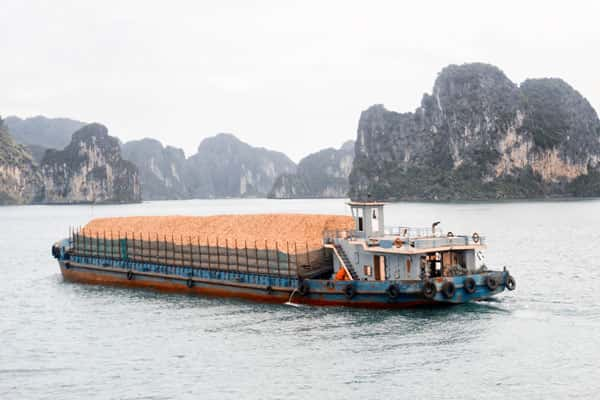
An example of a hopper barge.
Hopper Barges
Now we move onto hopper barges, which are barges carrying large hoppers, which can be filled with a variety of different cargos, including coal, sugar, grain, steel, ore, and much more. There are large hopper doors that open downward, which are closed when the barge is moving and are opened when the barge has arrived at the spot where the cargo needs dropping off. Some are instead split barges, meaning they have no hopper doors – the hull instead splits open down the middle from bow to stern and is hinged on the deck.
Hopper barges are nearly always double-hull constructions, meaning that the hull is separated from the cargo hold. The hoppers often have removable covers, although they can be uncovered, and these covers are designed to protect the cargo.

An example of a shale barge.
Shale Barges
Shale barges are an integral part of the oil drilling industry. They can have hoppers or be deck barges, but regardless of their construction, their specific job is to transport the liquid and shale cuttings produced at oil well drilling sites. This is necessary as it’s not sometimes possible to discharge the liquid and cuttings overboard due to environmental issues.
You’ll find that shale barges can come in a variety of sizes, with the largest shale barges being able to transport over 6,500 barrels of waste, which has a weight of just under 1,500 short tons. All this cargo is transported to an approved processing company, which disposes of the waste legally and safely.
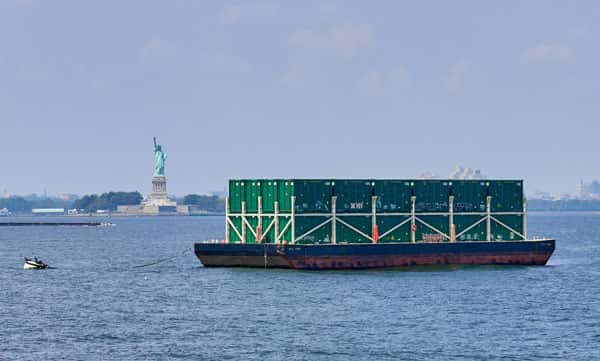
An example of liquid mud barges.
Liquid Mud Barges
Now we come to liquid mud barges. Barges of this type are mainly used to transport mud from inland oil well drilling sites. They feature piping and pumping systems, allowing for the quick taking on of cargo, as well as easy discharge.
Barges of this type have four separate compartments spread over two levels. Many liquid mud barges are capable of transporting over 2,300 barrels of cargo, which is approximately 260 GRT, and measure upwards of 130 feet in length.
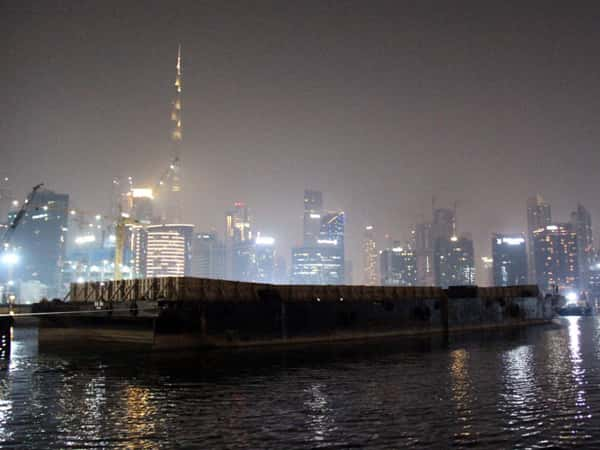
An example of an ocean barge.
Ocean Barges
Barges are mainly associated with working on inland waterways, but there are barges capable of operating in oceans, although usually close to the coast. They are often used as an alternative to ocean freighters, as there are many ports that are only accessible to barges. Ocean barges are a particularly good choice when transporting high-volume cargo, such as heavy equipment. However, there is a trade-off, as ocean barges are considerably slower than ocean freighters.
The demands of working on the open ocean mean that ocean barges must have specialised design and heavier construction than inland barges. This means that they can be expensive to build, as well as expensive to maintain. The cost of tugboats for hire also has to be factored into costs, as it does when assessing the operating costs of any other barge type.
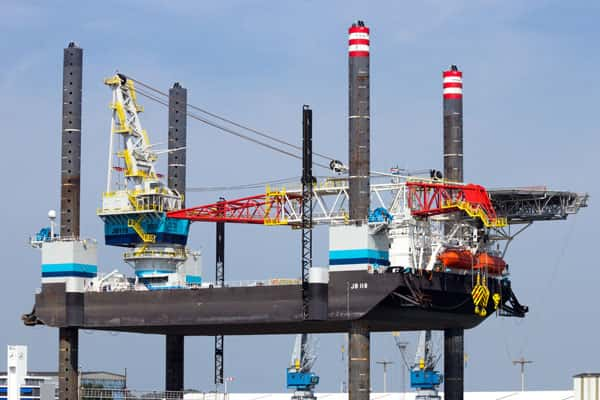
An example of a spud barge.
Spud and Crane Barges
Spud barges – sometimes called jack-up barges – are barges that are anchored to the bed using a steel shaft. This shaft is referred to as the spud. Securing the barge to the bed ensures maximum stability, preventing the barge from being moved by currents, wind, and any machinery that might also be being used on the barge. Speaking of machinery, these barges regularly house cranes, which benefit from the steady base.
Barges of this type are used for many marine construction projects, as well as for demolition work, marine recovery operations, driving pilings, and pipeline construction. Before being moored, they’re also a great transportation option.
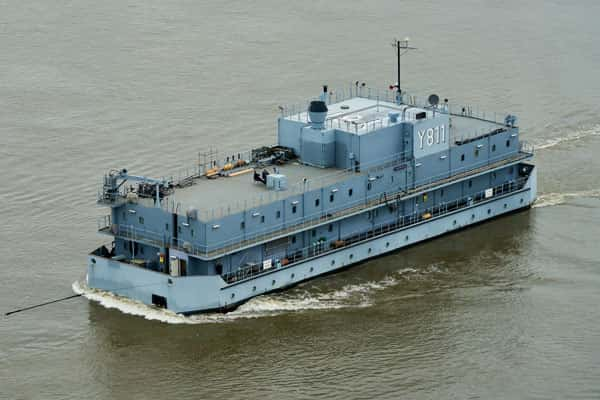
An example of a barracks barge.
Barracks Barges
Next on our list of types of barges are barrack barges, and these are exactly what they sound like – barracks constructed on barges to provide accommodation for military personnel. They are typically used to temporarily house military personnel before they have been assigned a ship. Barrack barges have been in use for many years and were used widely in World War II.
You’ll also find barges used for housing civilians and not military personnel, and they’re generally called accommodation vessels. These are often used to house workers taking part in large marine engineering projects, such as the building of oil platforms.
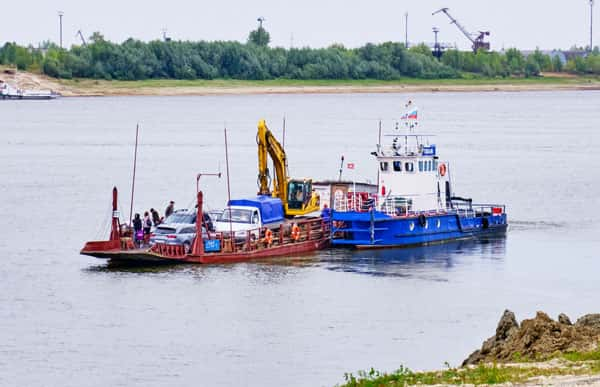
An example of a carfloat barge.
Car-Float Barges
Car-float barges have railway tracks built onto their decks. This allows railroad cars to be loaded onto them easily using a specialised ferry slip, which rises up and down to match the water level. Cars are then rolled off once the barge reaches its destination. They are nearly always unpowered and are pulled to their destination by tugboats.
Car-float barges differ from train ferries, as train ferries are not flat-bottomed and are usually self-propelled. Also, car-float barges can only be used on inland waterways, while train ferries can operate on the open ocean.
FAQs About Barges
What type of vessel is a barge?
A barge is a ship that has a flat bottom and is not usually powered, meaning it has to rely on other vessels, mostly tugboats, for propulsion. They are generally narrow and are mostly used on rivers and canals, as well as in ports, although there are some types of barges that can be used on the open ocean.
What sizes do barges come in?
Barges come in various sizes, and the larger the barge, the more freight it is usually able to carry. A typical barge is 300 feet long and carries up to 8,000 MT of cargo.
What is a deck barge?
A deck barge is a barge that can carry cargo on its specially adapted deck. They can also be used as platforms for people and machinery. Deck barges vary in size, making them suitable for a wide range of roles.
What holds a barge in place?
Barges are generally held in place with an anchor, as with any other ship. However, some barges, known as spud barges, use a steel shaft to anchor themselves to the bed, making them the most stable type of barge.
Where is the strength deck of a ship?
The strength deck of a ship is the top flange of the main hull girder. It is vital as it helps prevent longitudinal bending.
How much can a barge lift?
Barges with cranes can be used to lift considerable weights. Smaller crane barges can lift 50 to 500 tons, while larger barges can manage loads of 20,000 tons. Heavy lift crane barges, which usually use a twin-hull configuration, can sometimes lift even heavier loads.
How are barges used in offshore construction?
Barges can be used in many ways during offshore construction. They can transport equipment and workers to and from the construction site, plus they can house machinery, such as cranes. They can even be used for accommodation.
Final Thoughts
As you have read, barges are still a vital part of maritime infrastructure, and can be used for a range of jobs. There are several types of barges, including deck barges, crane barges, and ocean barges, each used for specific purposes. Barges can be bought, but the more affordable option is hiring them, as well as the tugboats required for propulsion.
Have you enjoyed reading this article? Or have you got any questions about barges and their many uses? If so, please leave a comment below! Also, don’t forget to share this page on social media if you’ve found it informative and interesting.



